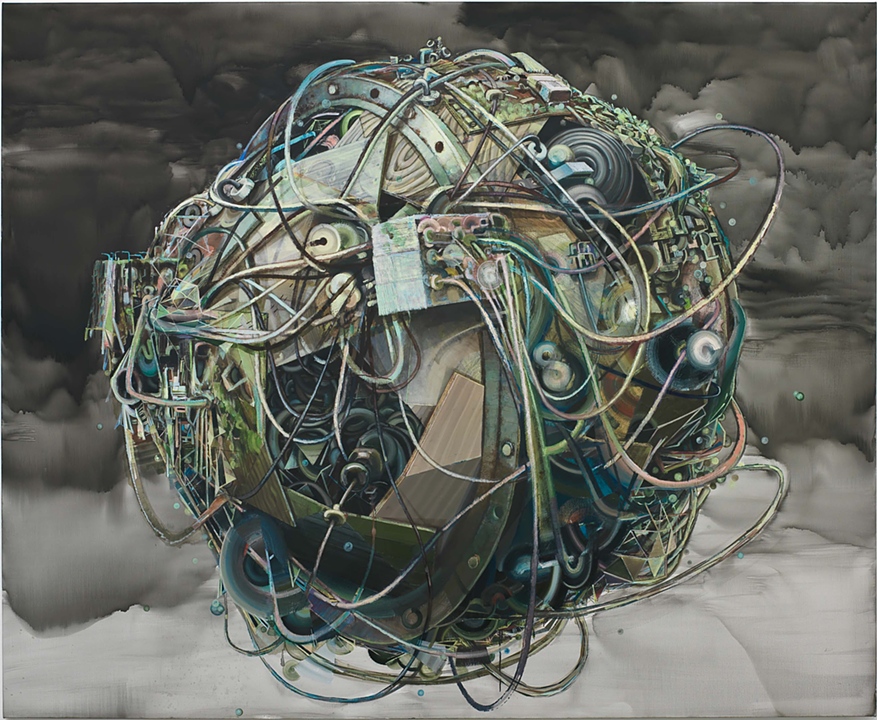At EzelDotz, we believe that art often speaks in parallel to the world around it. In weeks when headlines are filled with stories of activism, protest, and human fragility, we’re reminded that artists too grapple with these same themes – not through direct action, but through the quiet persistence of creation.
This week, as the world followed reports surrounding climate activist Greta Thunberg’s detention in Israel, the question of how individuals confront systems of power once again took centre stage. In a different but resonant way, Tom Ormond’s 2008 work Tumbler invites reflection on those same tensions – between order and collapse, structure and freedom, control and fragility.
Tom Ormond: Exploring Tension, Balance, and the Built World
Tom Ormond’s practice has long been marked by his interest in architecture, movement, and the boundaries of stability. His paintings hover between precision and disruption, using form and material to question how things hold together or fall apart.
In Tumbler (2008), we see this play out visually: fractured geometry, shifting planes, and the sense that the composition could change or disintegrate at any moment. Created during a period of economic uncertainty and global instability, the work feels just as relevant today; a reflection on the world’s perpetual state of flux.
A Recognised Voice in Contemporary British Art
Over the past two decades, Tom Ormond has built a strong and respected presence in the British art scene.
His work has been shown at leading spaces such as the Serpentine Gallery, Cell Project Space, Alison Jacques Gallery, Charlie Smith London, and George Polke Gallery.
His paintings and works on paper feature in important collections, including:
-
The New Art Gallery Walsall
-
Murderme Collection (Damien Hirst)
-
Deutsche Bank Works on Paper Collection
-
And numerous private collections across Europe and the U.S.
Occasional appearances at Sotheby’s and other auction houses, including the 2018 sale of Eight Horizons – have further underlined the desirability and growing recognition of his practice.
As his newer exhibitions command higher prices and increasing attention, earlier works like Tumbler are becoming rarer opportunities for collectors seeking both historical context and artistic integrity.
Awareness and Action – In Different Forms
While Greta Thunberg’s activism highlights the urgency of environmental and human rights issues, Ormond’s work addresses similar undercurrents through a visual language of instability and control. Both share a commitment to awareness to confronting the systems that define our sense of security, and asking how they might shift.
At EzelDotz, we’re drawn to artists like Ormond who make that dialogue visible: art that doesn’t just decorate a wall, but asks questions of the world that built it.
Collecting the Conversation
For collectors, Tumbler represents more than a striking work of contemporary art: it’s a chance to acquire a piece that bridges moments of reflection across decades, echoing both the uncertainties of 2008 and the urgencies of 2025.
👉 View the listing on EzelDotz
In Reflection
Art and activism may take different paths, but both hold the same intention- to make us look again.
Through works like Tumbler, Ormond reminds us that even in stillness, art can speak to movement, fragility, and change.
At EzelDotz, we’re proud to bring such works to light, ensuring that every piece, every story, and every artist continues to find their place in the evolving conversation between art and awareness.





